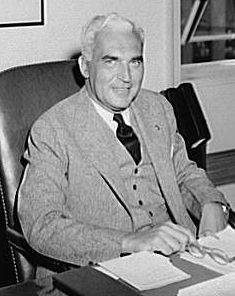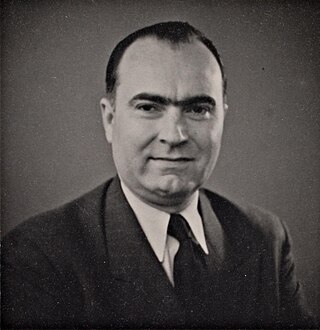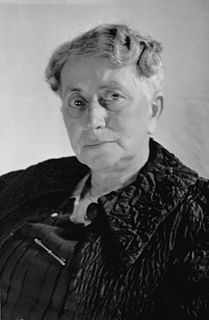 W
W W
WKhaled Abdul-Wahab was a Muslim Tunisian man who saved several Jewish families from Nazi persecution, in Vichy-Tunisia, during the Holocaust. He has been called the 'Tunisian Schindler'.
 W
WMoisés Bensabat Amzalak was a Portuguese scholar and economist. Amzalak was born and educated in Lisbon. He combined a successful business career with broad academic activity. A devoted Jew, a central figure in the Portuguese Jewish Community, he headed the Lisbon Jewish community from 1926 until his death in 1978.
 W
WVilmos Apor de Altorja was a Hungarian Roman Catholic prelate, born as a baron in the noble Apor family, and served as a bishop during World War II. He became famous for protesting against the persecution of the Hungarian Jewish population and for his steadfast commitment to the poor. His outreach also extended to abuse victims with a particular emphasis on the protection of women - it would be this latter point that saw him sustain fatal injuries leading to his death. The bishop dedicated himself to being an opponent of both communism and Nazism and used his sermons as a chance to condemn them though coming at a great personal risk to himself. But he was a beloved figure in his diocese where people hailed him as a great saint upon learning of his death which came as a profound shock and loss to the diocese he served during the course of most of the war.
 W
WMax Carol Auschnitt, also known as Ausschnitt, Auschnit or Aușnit, was a Romanian businessman and political figure, one of his country's most prominent industrialists during the interwar period. Born to Ukrainian Jewish immigrants, he spent much of his youth abroad, returning in the 1910s to set up business as an importer of sheet iron, greatly expanding his father's fortune after World War I. Auschnitt was caretaker, and from 1929 managing director, of the Iron Domains and Factory (UDR) of Reșița, as well as founder of Titan-Nădrag-Călan (TNC), regional partner of Vickers-Armstrongs, and investor in many other fields. Primarily known as the "iron king" of Greater Romania, he had a business connection, and later a consuming rivalry, with manufacturer Nicolae Malaxa. The two were associate owners of Creditanstalt, which established their presence in Europe.
 W
WAbdelkader Ben Ghabrit, commonly known as Si Kaddour Benghabrit was an Algerian religious leader, translator and interpreter who worked for the French Ministry of Foreign Affairs. He was the first rector of the Great Mosque of Paris.
 W
WHiram "Harry" Bingham IV was an American diplomat. He served as a Vice Consul in Marseilles, France, during World War II, and, along with Varian Fry, helped over 2,500 Jews to flee from France as Nazi forces advanced.
 W
WGilberto Bosques Saldívar was a Mexican diplomat and before that a militant in the Mexican Revolution and a leftist legislator. As a consul in Marseille, Vichy France, Bosques took initiative to rescue tens of thousands of Jews and Spanish Republican exiles from being deported to Nazi Germany or Spain, but his heroism remained unknown to the world at large for some sixty years, until several years after his death at the age of 102. For about two decades after World War II, Bosques served as Mexico's ambassador to several countries. Since 2003, international recognition has been accruing to him. In 1944, he described his efforts thus: "I followed the policy of my country, of material and moral support to the heroic defenders of the Spanish Republic, the stalwart paladins of the struggle against Hitler, Mussolini, Franco, Petain, and Laval."
 W
WBertha Lilian Bracey (1893–1989) was an English Quaker teacher and aid worker who organised relief and sanctuary for Europeans affected by the turmoil before, during and after the Second World War. These included many Jewish children threatened by the Holocaust and rescued in the operation known as the Kindertransport. In 2010, she was recognised as a British Hero of the Holocaust.
 W
WJoel Brand was a member of the Budapest Aid and Rescue Committee, an underground Zionist group in Budapest, Hungary, that smuggled Jews out of German-occupied Europe to the relative safety of Hungary, during the Holocaust. When Germany invaded Hungary too in March 1944, Brand became known for his efforts to save the Jewish community from deportation to the Auschwitz concentration camp in occupied Poland and the gas chamber.
 W
WRené Carmille was a French military officer, civil servant, and member of the French Resistance. During World War II, in his office at the government's Demographics Department, he created the National Statistics Service and the individual code number which would become the social security number after liberation and is still used in France today. While there, Carmille sabotaged the Nazi census of France, thus saving tens of thousands of Jewish people from death camps.
 W
WJosé Arturo Castellanos Contreras was a Salvadoran army colonel and diplomat who, while working as El Salvador's Consul General for Geneva during World War II, and in conjunction with a Jewish-Romanian businessman named György Mandl, helped save up to 40,000 Central European Jews, most of them from Hungary, from Nazi persecution by providing them with fake Salvadoran citizenship certificates.
 W
WHélène Cazès-Benatar was a Moroccan Jewish lawyer and human rights activist. During World War II she organized relief efforts in North Africa for Jewish and other refugees.
 W
WHenrietta Chetta Chevalier, a Maltese woman of British nationality resident in Rome, was a critical node in Monsignor Hugh O'Flaherty's "Rome Escape Line" network operating in the Vatican during World War II. Her third-floor flat on the Via Imperia was used as a depot for supplies, and to lodge escapees fleeing the Fascist regimes of Europe. She was known within the organization as "Mrs. M." The provenance of her nom de guerre — whether this was a reference to her home island of Malta, her mother's maiden name, or another factor — is unknown.
 W
WSamuel del Campo was a Chilean diplomat, and Righteous Among the Nations. From 1941 to 1943, he worked in Bucharest, Romania. He is credited with saving 1,200 Jews by issuing them Chilean passports.
 W
WKlawdziy Stsyapanavich Duzh-Dushewski was a Belarusian civil engineer, architect, diplomat and journalist. He is believed to be the creator of the Flag of Belarus in 1917.
 W
WMaría Edwards McClure was a Chilean social worker and Catholic nurse who was honored in November 2005 at Israel's Yad Vashem memorial as one of the "Righteous Among The Nations," for her participation during the Holocaust in helping to save Jewish children in France. Her actions were not limited to saving Jews but she also actively helped the French resistance.
 W
WChaim Yisroel Eiss was an Agudath Israel activist and writer. He also was among the founders of the Agudath Israel in 1912. During the First World War, Rebbe Eiss set up an aid system that located refugees, found out what they most needed and raised the required funds. During World War II, he worked on behalf of Jews in Nazi-occupied Europe and he was a member of the Ładoś Group also called as Ładoś Group.
 W
WMarie Elisabeth Jean Elmes was an Irish aid worker credited with saving the lives of at least 200 Jewish children at various times during the Holocaust, by hiding them in the boot of her car. In 2015, she became the first and only Irish person honoured as Righteous Among the Nations by the State of Israel, in recognition of her work in the Spanish Civil War and World War II.
 W
WJohannes Wilhelm Arthur "Hänschen" Frömming was a German harness racing driver and trainer. He is one of the most legendary horsemen in European harness racing.
 W
WEgidio Galea OSA MBE was a Maltese Augustinian Roman Catholic priest, missionary, and educator, and a significant figure in the Catholic resistance to Nazism in Italy during World War II. He was a close aide to the Irish priest Hugh O'Flaherty.
 W
WRaymond Herman Geist was the American Consul and First Secretary of the United States embassy in Berlin from 1929 to 1939. Geist has been recognized as Diplomat Savior by the International Raoul Wallenberg Foundation, which advocates for the recognition of Holocaust rescuers. However, one academic researcher has asserted that Geist largely acted to block the granting of visas to Jewish immigrants between 1933 and 1939, in line with the policy adopted by U.S. Foreign Service Officers in Germany at the time. A 2019 book about Geist found that "Geist was doing what he could to liberalize America's scandalously tight visa regime for Jewish refugees, help as many German Jews as possible."
 W
WGilbert and Eleanor Kraus were an American couple known for rescuing 50 Jewish children prior to the beginning of World War II.
 W
WAlbert Günther Göring was a German engineer, businessman, and the younger brother of Hermann Göring. In contrast to his brother, Albert was opposed to Nazism, and he helped Jews and others who were persecuted in Nazi Germany. He was shunned in post-war Germany because of his family name, and he died without any public recognition and received very little attention for his humanitarian efforts until decades after his death.
 W
WHeinz Siegfried Heydrich was the son of Richard Bruno Heydrich and the younger brother of SS-Obergruppenführer Reinhard Heydrich. After the death of his brother, Heinz Heydrich helped Jews escape the Holocaust.
 W
WEduard Alexander Felix Kersten was the personal physical therapist of Heinrich Himmler, who also became a confidant and adviser to the Reichsführer-SS. Kersten used his contacts with Himmler to help people persecuted by Nazi Germany.
 W
WClemens Heinrich Krauss was an Austrian conductor and opera impresario, particularly associated with the music of Richard Strauss.
 W
WCarl Lutz was a Swiss diplomat. He served as the Swiss Vice-Consul in Budapest, Hungary, from 1942 until the end of World War II. He is credited with saving over 62,000 Jews, the largest rescue operation of Jews of the Second World War.
 W
WGeorge Mantello, a businessman with various diplomatic activities, born into a Jewish family from Transylvania, helped save thousands of Hungarian Jews from the Holocaust while working for the Salvadoran consulate in Geneva, Switzerland from 1942 to 1945 under the protection of consul Castellanos Contreras, by providing them with fictive Salvadoran citizenship papers. He publicized in mid-1944 the deportation of Hungarian Jews to the Auschwitz-Birkenau death camp, which had great impact on rescue and was a major contributing factor to Hungary's regent Miklós Horthy stopping the transports to Auschwitz.
 W
WGiuseppe Ramiro Marcone was a Benedictine Abbott. He was ordained in 1906 and appointed Abbot of Montevergine, Italy in 1918. He served an Apostolic Visitor to Croatia during World War II, in which capacity he worked on behalf of the Holy See for the protection of Croatian Jews.
 W
WPaul Vories McNutt was an American diplomat and politician who served as the 34th governor of Indiana, high commissioner to the Philippines, administrator of the Federal Security Agency, chairman of the War Manpower Commission and ambassador to the Philippines.
 W
WDelia Murphy Kiernan was a singer and collector of Irish ballads. She recorded several 78 rpm records in the 1930s, 1940s and 1950s. In 1962 she recorded her only LP, The Queen of Connemara, for Irish Prestige Records, New York, on the cover of which her name appears alongside the LP title.
 W
WHugh O'Flaherty, was an Irish Catholic priest and senior official of the Roman Curia, and significant figure in Catholic resistance to Nazism. During World War II, O'Flaherty was responsible for saving 6,500 Allied soldiers and Jews. His ability to evade the traps set by the German Gestapo and Sicherheitsdienst (SD), earned O'Flaherty the nickname "The Scarlet Pimpernel of the Vatican". After the Second World War he was named a papal domestic prelate by Pope Pius XII and served as notary of the Holy Office, working alongside and assisting Alfredo Cardinal Ottaviani until 1960.
 W
WHelmut Roland Heinrich Pfeiffer was a German lawyer and SS officer who rescued people hunted by the Nazi regime.
 W
WHenriëtte Henriquez Pimentel was a Dutch teacher and trained nurse who during the Second World War headed a crèche in Amsterdam which cared for small children while their parents were otherwise occupied. Together with Walter Süskind and Johan van Hulst, from around October 1942 she helped to save the lives of hundreds of Jewish infants by smuggling them into the homes of sympathetic host families. After being arrested by the Nazis in April 1943, she died in the Auschwitz concentration camp the following September.
 W
WPope Pius XII, born Eugenio Maria Giuseppe Giovanni Pacelli, was head of the Catholic Church and sovereign of the Vatican City State from 2 March 1939 until his death in 1958. Before his election to the papacy, he served as secretary of the Department of Extraordinary Ecclesiastical Affairs, papal nuncio to Germany, and Cardinal Secretary of State, in which capacity he worked to conclude treaties with European and Latin American nations, such as the Reichskonkordat with Nazi Germany.
 W
WÁngel Sanz Briz was a Spanish diplomat who served under Francoist Spain during World War II. He saved the lives of some five thousand Hungarian Jews from deportation to Auschwitz. Sanz Briz is sometimes referred to as "the angel of Budapest".
 W
WEmilie Schindler was a Sudeten German-born woman who, with her husband Oskar Schindler, helped to save the lives of 1,200 Jews during World War II by employing them in his enamelware and munitions factories, providing them immunity from the Nazis. She was recognized as Righteous Among the Nations by Israel's Yad Vashem in 1994.
 W
WAndrey Sheptytsky, was the Metropolitan Archbishop of the Ukrainian Greek Catholic Church from 1901 until his death in 1944. His tenure spanned two world wars and seven political regimes: Austrian, Russian, Ukrainian, Polish, Soviet, General Government (Nazi), and again Soviet.
 W
WAdolf Henryk Silberschein, also known as Abraham Silberschein was a Polish-Jewish lawyer, activist of the World Jewish Congress, Zionist, member of the Polish Sejm (1922–27). During the Holocaust he was a member of the Ładoś Group also called as Ładoś Group, an informal cooperation of Jewish organizations and Polish diplomats who fabricated and smuggled illegal Latin American passports to occupied Poland, saving their holders and their families from immediate deportation to German Nazi death camps.
 W
WRosa (Hoffman) Stallbaumer was a member of the Austrian Resistance during World War II. Her name is one of 124 names of women and men from Tyrol, Austria inscribed on the Liberation Monument at The Eduard-Wallnöfer-Platz in Innsbruck in recognition of both her involvement in resisting National Socialism and of her death at Auschwitz, following her incarceration at that Nazi concentration camp as punishment for helping Jewish targets of Nazi persecution escape to Italy.
 W
WIlse (Intrator) Stanley, , was a German Jewish woman who, with the collusion of a handful of people ranging from Nazi members of the Gestapo to other Jewish civilians, secured the release of 412 Jewish prisoners from Nazi concentration camps between 1936 and 1938.
 W
WJulius Steinfeld was born in Neunkirchen, Austria. He later moved to Vienna where he became the head of the community's Agudath Israel. He was also known as the shtadlan from Vienna.
 W
WHerman Stern, humanitarian, social and economic activist, businessman, visionary and director of the North Dakota Winter Show, Holocaust rescuer.
 W
WGermaine Tillion was a French ethnologist, best known for her work in Algeria in the 1950s on behalf of the French government. A member of the French resistance, she spent time in the Ravensbrück concentration camp.
 W
WGeertruida Wijsmuller-Meijer was a Dutch resistance fighter who brought Jewish children and adults into safety before and during the Second World War. Together with other people involved in the pre-war Kindertransport, she saved the lives of more than 10,000 Jewish children, fleeing anti-Semitism. She was honored as Righteous among the Nations by Yad Vashem. After the war she served on the Amsterdam city council.
 W
WSir Nicholas George Winton was a British banker and humanitarian who established an organisation to rescue children at risk from Nazi Germany. Born to German-Jewish parents who had emigrated to Britain at the beginning of the 20th century, Winton supervised the rescue of 669 children, most of them Jewish, from Czechoslovakia on the eve of World War II. Winton found homes for the children and arranged for their safe passage to Britain. This operation was later known as the Czech Kindertransport.
 W
WGerhard Wolf was a German diplomat who served as consul in Florence during World War II.
 W
WAbraham Leib Zissu was a Romanian writer, political essayist, industrialist, and spokesman of the Jewish Romanian community. Of lowly social origin and a recipient of Hasidic education, he became a noted cultural activist, polemicist, and newspaper founder, remembered primarily for his Mântuirea daily. By the end of World War I, he emerged as a theorist of Religious Zionism, preferring communitarianism and self-segregation to the assimilationist option, while also promoting literary modernism in his activity as novelist, dramatist, and cultural sponsor. He was the inspiration behind the Jewish Party, which competed with the mainstream Union of Romanian Jews for the Jewish vote. Zissu and Union leader Wilhelm Filderman had a lifelong disputation over religious and practical politics.
 W
WJan Zwartendijk was a Dutch businessman and diplomat. As director of the Philips plants in Lithuania and part-time acting consul of the Dutch government-in-exile, he supervised the writing of 2,345 visas for Curaçao to save Jews from the Holocaust during World War II. In 1997, Yad Vashem recognised him as Righteous Among the Nations.